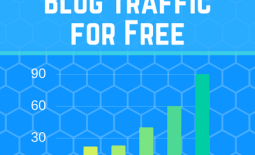What you can learn from a Traffic Exchange Network
 The more time I spend surfing Internet the more I learn about the Internet Underbelly and what we as bloggers are really up against.
The more time I spend surfing Internet the more I learn about the Internet Underbelly and what we as bloggers are really up against.
You see most people think about starting a blog or a website because they’ve visited a poorly designed one in their niche and thought they could do a better job. In reality, that website might find it’s way to the front page of Google because of what’s called Search Engine Optimisation or SEO for short. Which is one way to get ahead of the others in your niche, but doesn’t really credit the usability of the website.
However, over the years Google has made bold statements on how they are cleaning up search results with Panda’s and Penguin’s. Ok, not actual Pandas and Penguins, although that would be kinda cute. I’m talking about Google algorithm updates named Panda, Penguin, Pigeon etc.
These updates are meant to deter people profiting from website manipulation in order to make their websites more bot-friendly and less user-friendly which doesn’t help the average Web Surfer’s Experience does it?
But what’s this got to do with a Traffic Exchange Network?
A Traffic Exchange Network is a marketplace where people exchange views of websites with each other. It’s a case of you scratch my back and I’ll scratch yours, or that’s how it’s advertised and in principle this kinda happens with Bloggers in a more informal way.
You visit someone’s blog, read and comment and maybe they’ll reciprocate in the same manner. It’s kinda like an exchange of traffic.
Whereas a Traffic Exchange Network is formal way to exchange website traffic and can result in many page views of your website from many different sources.
So What’s the Catch?
The catch is these page views don’t mean much because the exchange process only requires viewing a website for 20 more seconds before you get your exchange credit and can move onto another website. Most people are often surfing other web pages whilst collecting exchange credits so you’re not really getting eyeballs on your website anyway.
Additionally, getting very short page views will also affect your Google Ranking because your bounce rate will increase which is a sign of poor user engagement.
What You Can Learn from a Traffic Exchange Network
#1 – Above the Fold Matters
If you spend some time on a Traffic Exchange you’ll see a number of websites in a very short period of time and what you’ll soon realise is what works and what doesn’t because all you’re seeing is above the fold results. And even though people tell you time and time again that this is the most valuable part of your website, sometimes it doesn’t sink in until you see it first hand.
Here are a few tips for above the fold design:
Don’t make it too busy – Focus only on one call to action and don’t make the user second guess what they are supposed to do.
Make it readable – Many older websites still have a 10pt or 12pt font size and on a super high-resolution screen this displays as tiny text. Make sure your font size is corrected for today’s monitors, which means using a 14pt or higher.
Include an image – A picture tells a thousand words and you’ve only got a short window of time to impress the reader. A person can read a picture much faster than they read words so include a relevant image above the fold.
Call to action – Given your reader might not scroll any further down the page you want to include a call to action above the fold.
#2 – Sell Something
Following on from the call to action idea, you might as well try to sell something above the fold but focus on a soft sell rather than a hard one. You can sell a product or just sell an opportunity to join your email list.
You could even just try to sell the concept for your website. But you should try to sell something as this could be the first and last thing your customer sees.
#3 – Traffic Results can be Manipulated
I hadn’t really thought about this although I’d heard this phrase being used before, but yes traffic can be manipulated really easily by using a Traffic Exchange Network.
So if you are looking to buy an existing website or can’t believe the sensational traffic results an Internet Marketer is having with their product, always ask yourself, is the data real.
In order to do thorough research into the legitimacy of a website’s traffic, try and get access to the Google Analytics Data either directly of via a data export. Then look for obvious signs of real engagement like Low Bounce Rate, High Ave. Session Duration and High Pages/Session as a starter.
#4 – It’s Great for Load Testing
So you might have bought a cheap hosting plan that’s great for the average website of up to 100 daily users but what happens to your website when your post goes viral because some major publication has picked up your story?
Well if you don’t know then you should definitely give a Traffic Exchange Network a try as they’ll provide you with real traffic to your website that you can use to test the performance of your website under high load. The best part is you have the control switch and can turn the traffic on for as long as you need.
Don’t pay other people to send traffic to your website, just manage it yourself with a popular Network Traffic Exchange like Traffic Monsoon and take full control.
Obviously, you’ll want to perform these test in slow periods of activity, but at least you’ll understand what happens to your website when you get hit with a lot of concurrent traffic.
Conclusion
I don’t consider my time spent investigating a Traffic Exchange Network like Traffic Monsoon was a complete waste of time and besides it started as research for a side project I’m currently doing. (yes, another blog)
It taught me the value of ‘above the fold’, and yes I was one of those people that kept hearing above the fold matters but was never actually listening. Seeing it first-hand makes the impact very real.
I managed to do some load testing to validate my assumptions about shared hosting and will play around with a VPS server setup next.
And it also allowed me to uncover a little more of the Internet’s underbelly, which help’s me to understand what’s really happening when some get’s massive traffic and yet my gut feeling suggests otherwise.
Have you use a Traffic Exchange Network before? If so what were your learning from it?
Share the post "What you can learn from a Traffic Exchange Network"




